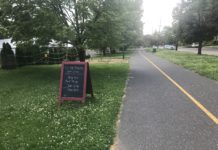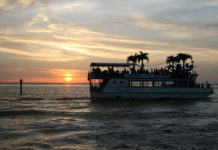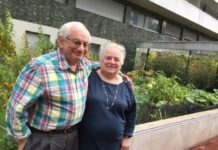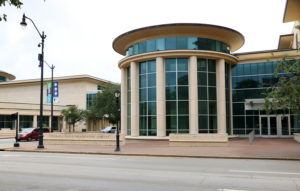
By Jeff and Virginia Orenstein
Note: We recommended that travelers should continue to follow the latest Centers for Disease Control and Prevention guidelines, and check with each mode of transportation and specific venue of interest for current information before traveling. Check visitspringfieldillinois.com/BlogDetails.aspx/Latest_News_on_COVID-19.
Springfield is the state capital of Illinois and former home of Abraham Lincoln. It is a delightful medium-sized city that looks and feels quintessentially Midwestern, while it celebrates its Lincoln heritage. Its downtown area is compact, walkable and full of fascinating history and hospitality.
As Springfield’s most famous citizen, Lincoln is remembered and celebrated throughout the town. The Lincoln Presidential Library and Museum is a not-to-be-missed attraction that tells the story of Lincoln and his times with vivid sights, sounds and interactive multimedia displays. The National Park Service also maintains a historical site and ranger-escorted tours nearby at Lincoln’s Springfield home. Numerous other Lincoln-oriented attractions dot the region.
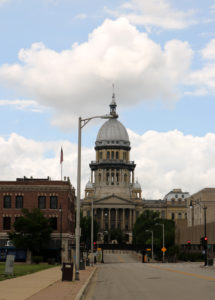
Historic Route 66’s original 1926 alignment came directly through Springfield and brought so many to and through the city, helping to increase interest. The Cozy Dog Drive In and the Route 66 Motorheads Bar, Grill & Museum are good places to explore that celebrated road’s history and sample some of its kitschy delicacies like the Cozy Dog hot dog on a stick.
Because it is home to the Illinois state government, today’s Springfield is dominated by state buildings and business. The tallest building in town is the Illinois State Capitol which is remarkable for its lush furnishings and its Renaissance Revival and Second Empire style.
Barack Obama started his political career there. The nearby Old State Capitol was where Abraham Lincoln made his famous “A house divided against itself cannot stand” speech.
Be sure to stop by the downtown visitor’s center (once home to the Lincoln-Herndon law office) and get your free Explorer Passport to local attractions.
Springfield is a recommended destination because of its history and comfortable ambiance. It’s a good place to visit in its own right, and if your road or train travels take you along the path from Chicago to St. Louis, Springfield is a worthwhile way stop that merits at least an overnight stay.
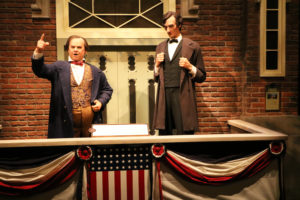
Before You Go:
visitspringfieldillinois.com/
facebook.com/VisitSpringfield/
midwestliving.com/travel/illinois/springfield-illinois/top-things-to-do-springfield-illinois/
visittheusa.com/destination/springfield-illinois
illinoisroute66.org/springfield-il/
youtube.com/channel/UCGYWETpnJkTYQB_y_pUHvPg
Getting There:
Springfield can be easily reached by highway, air or train.
By car, Springfield is at the intersection of Interstate 72 and Interstate 55.
By air, the nearest commercial airport is Abraham Lincoln Capital Airport (SPI), 4.3 miles away.
By train, the Amtrak station is right in downtown Springfield (a short walk from the Lincoln Library) and has frequent service to and from Chicago and daily to St. Louis and points in Texas.
Since Springfield is an inland city, there are no ocean cruise connections.
Must-Sees and Dos for a Short Trip:
The Abraham Lincoln Presidential Library and Museum
Lincoln Home National Historical Site
The Old State Capitol
The Lincoln Tomb
Enjoy a poutine-like horseshoe sandwich (local delicacy) at a local microbrewery like downtown’s Obed and Isaacs.
Lincoln’s New Salem Historical Site
Route 66 Motorheads Bar, Grill & Museum
If You Have Several Days:
Tour the Illinois State Capitol with guide.
Route 66 attractions (Cozy Dog, Route 66 Motorheads, etc.)
A Lincoln ghost walk (springfieldwalks.com)
Dana-Thomas House (Frank Lloyd Wright architecture)
Tour the Illinois Governor’s Mansion.
Ginny O’s Tips for Dressing the Simply Smart Travel Way for Springfield: This is a capital city, so the dress is a little more business-like than many tourist attractions, especially when the legislature is in session. Neat casual is always acceptable.
This Destination at a Glance
Over 50 Advantage: Enjoy history and a laid-back, friendly Midwestern ambiance.
Mobility Level: Moderate. Some attractions require substantial walking and some stairs.
When to Go: Year-round. Winters are cold, and summer can be hot and humid.
Where to Stay: We loved our stay at the Inn at 835 Boutique Hotel. There are a few outside steps, but the interior has an elevator.
Special Travel Interests: Abraham Lincoln, Route 66, Illinois government.
Jewish Springfield
Since Springfield is the heart of the Land of Lincoln, it is worth noting that Lincoln declared in a public conversation in 1863 that he had “a high regard for the Jews” and had close and enduring friendships and political alliances with several Jews during his days in New Salem and Springfield, including Abraham Jonas and Julius Hammerslough.
Springfield has almost 1,000 Jews out of a population of about 113,000 making it a small — but active — Jewish community. According to a history by Rabbi Barry Marks, Springfield’s original Jewish settlers arrived in the 1850s. The first congregation was the Springfield Hebrew Congregation, dating to 1858, composed of predominantly German immigrants. The group evolved into the Reform Temple B’rith Sholom and built a synagogue on North Fifth Street.
Eastern European Jews began arriving in Springfield in the 1880s. In 1895, they bought a former Methodist Church on the southeast corner of Seventh and Mason streets and adapted it for use as synagogue B’nai Abraham.
In the 20th century, many prosperous German Jews migrated to the Aristocracy Hill neighborhood south of downtown. Temple B’rith Sholom built a new synagogue in 1917 in the Classical Revival style on South Fourth Street, which it still uses. The East European Jews lived north and east of downtown on Jefferson, Mason, Reynolds and Carpenter streets.
Despite the Great Depression, both congregations flourished in the 1930s when Illinois got its first Jewish governor, Henry Horner. (Samuel Shapiro was its second and only other.) B’nai Abraham’s then-new synagogue was completed in the late 1930s. It is now called Temple Israel.
In 1981, the two congregations merged their Sunday school programs and formed the Springfield Board of Jewish Education, and Temple Israel and Temple B’rith Sholom cooperate in other joint endeavors. A Springfield Chabad congregation was founded in 2016.
Most of the Jewish young men (and some women) of service age were in the armed forces during World War II; six were casualties. The Jewish Federation of Springfield was founded in 1941 as the charitable, cultural and philanthropic arm of Springfield Jewry and represents the entire Jewish community. Other local Jewish organizations include a chapter of Hadassah and a B’nai B’rith lodge.
The 1970s saw growth for the Springfield Jewish community. New universities and Illinois state government brought many young Jewish professionals (especially from the Chicago and St. Louis areas) to Springfield. Local Jews are prominent in the legal and medical professions, as well as in the leadership of local community organizations.
Today, Springfield’s Jewish community remains small but significant to area Jews.
Jeffrey and Virginia Orenstein are travel writers from Sarasota, Florida.



